Think you know the night sky? If you've only ever stargazed from the northern hemisphere, you only know half the story.
There's a wealth of amazing astronomical objects and beautiful dark skies visible from the southern hemisphere.
In the southern hemisphere the seasonal constellations are all upside-down, as far as a northerner is concerned, while a slew of bright stars – including the nearest to us – and some of the night sky’s most arresting deep-sky sights are all on show.
For more advice, find out what's in the Southern Hemisphere night sky tonight and read our guide to astronomy in Australia.
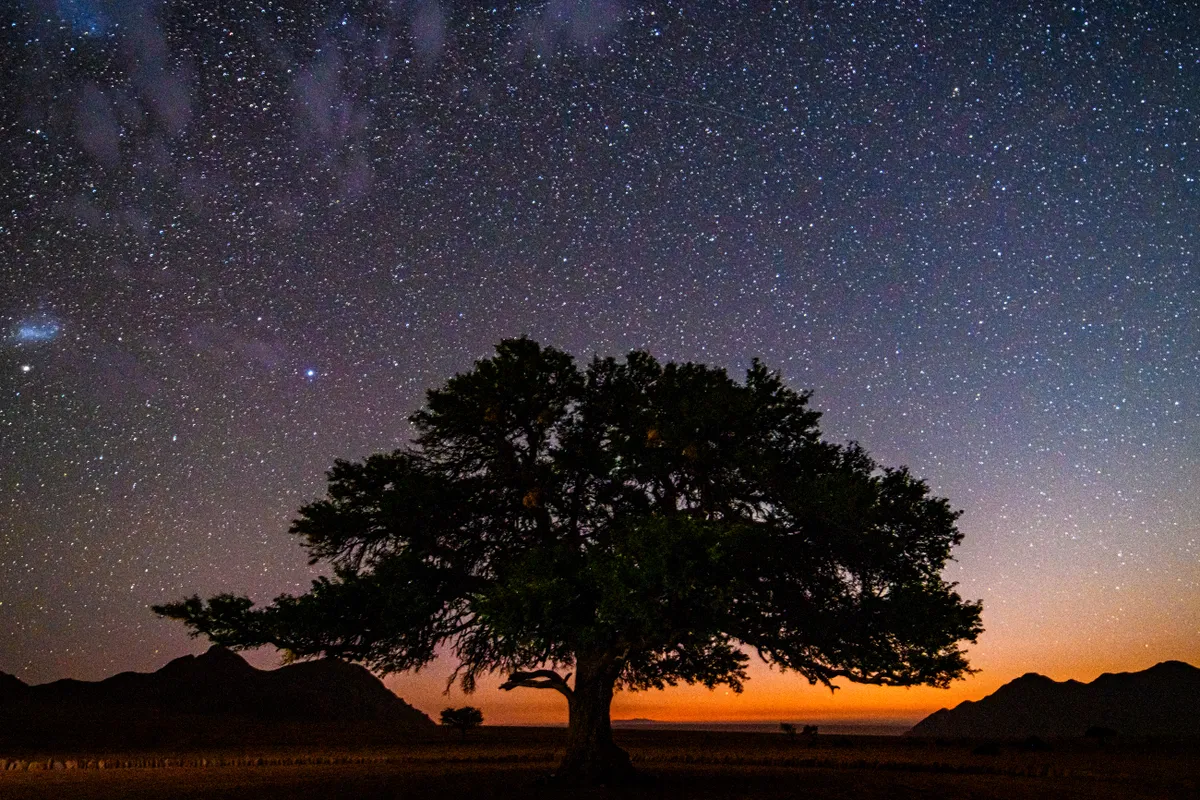
While the north pole faces outwards to the Universe beyond, the south pole points to the galactic centre of the Milky Way.
This means more bright stars and more constellations containing more stunning objects. Plus, everything in the southern hemisphere sky will look upside down, if you're used to northern skies.
It's a whole new night sky to learn and get familiar with, with incredibly dark skies under which to enjoy your southern astronomy adventure.
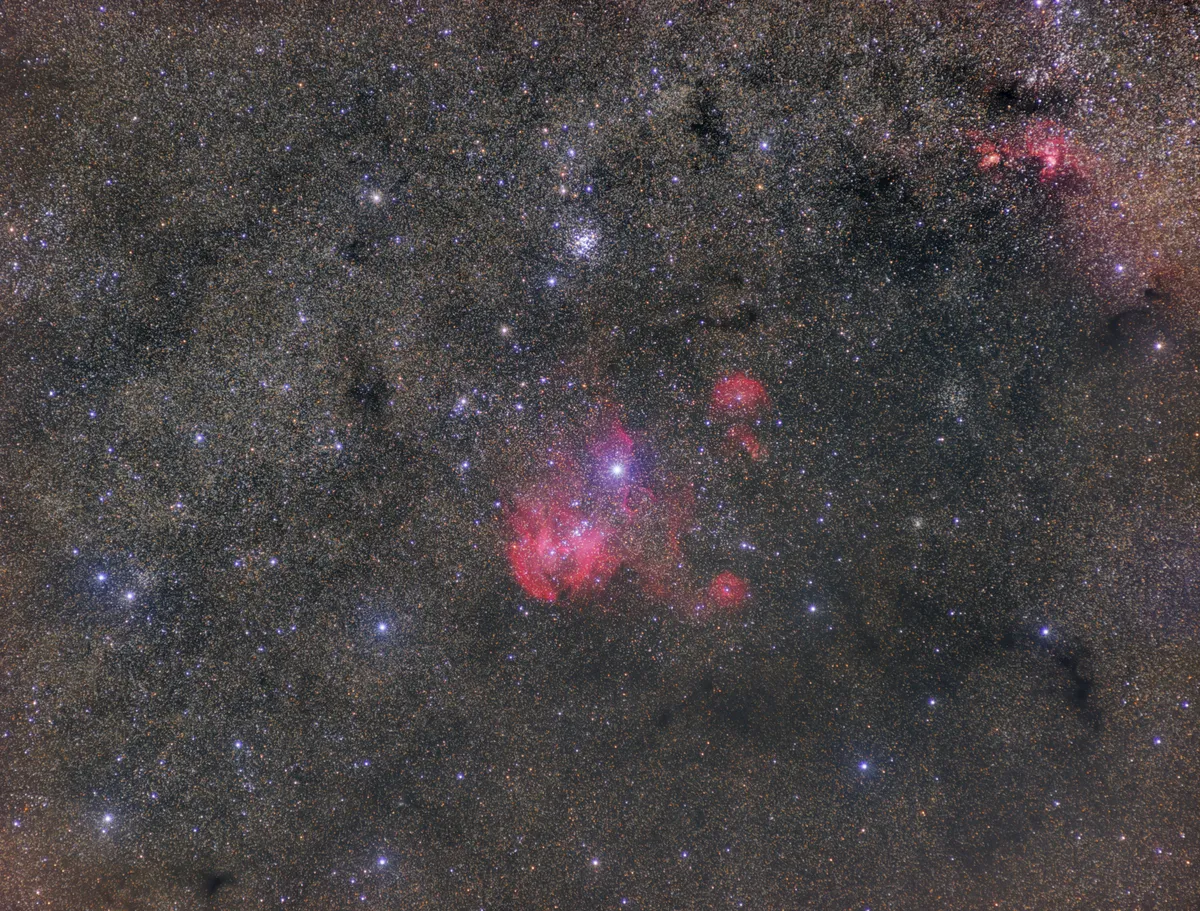
This is our guide to stargazing and astronomy under the southern hemisphere guide, and a list of the top astronomical phenomena you can see south of the equator.
We've also included a list of the best astro holidays and dark-sky sights from which to explore the southern hemisphere sky.
11 astronomy targets to see in the southern hemisphere
1
The Milky Way's bright centre
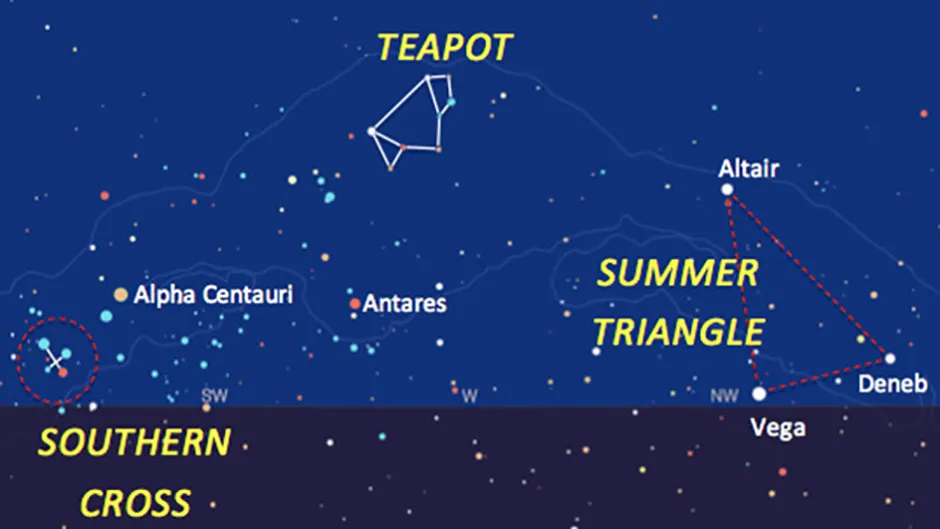
Best time to see June - September
With the naked eye, find the Summer (or should that be Winter?) Triangle – which will be upside down compared to the view from the northern hemisphere – and trace the Milky Way from Deneb on the northern horizon up to Altair, across the zenith above you through Sagittarius and its Teapot asterism, and down to Alpha Centauri and the Southern Cross above the southern horizon.
This is the Sagittarius Arm of our galaxy, and it's stunning.
2
Alpha Centauri
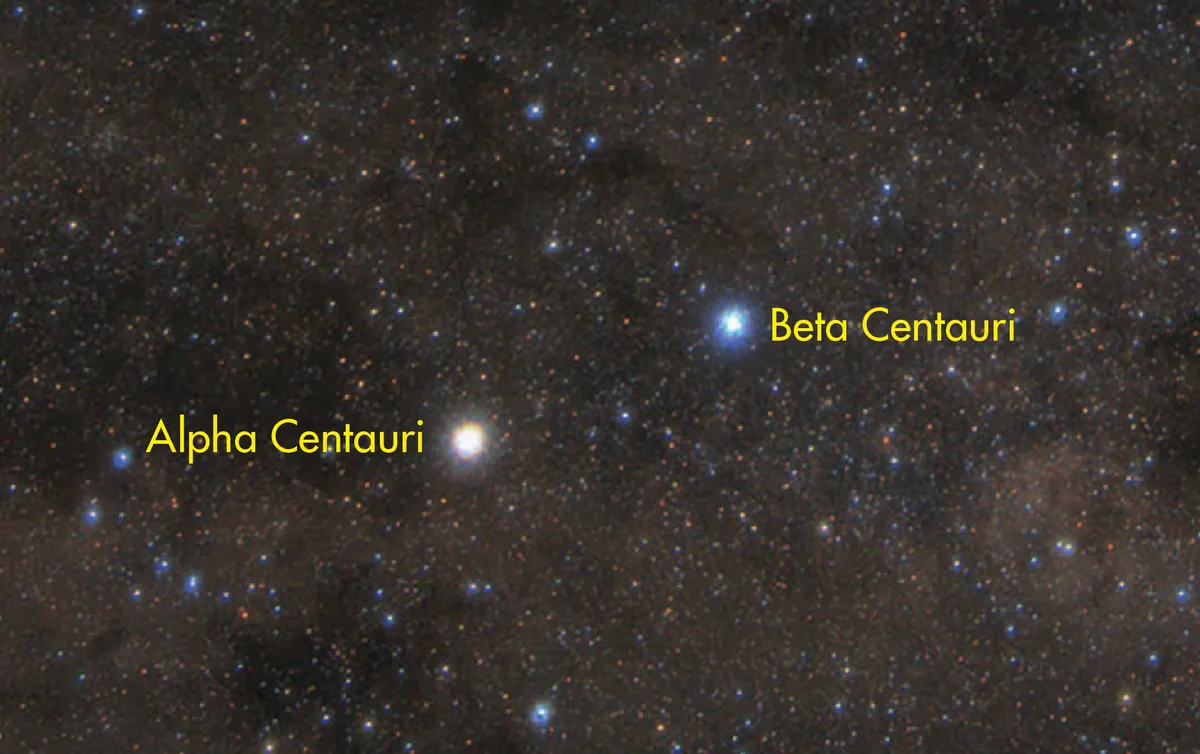
Best time to see March - September
To see the nearest star to our Sun is one of the reasons stargazers love to travel south.
Sadly Proxima Centauri, a red dwarf star just 4.24 light-years from us, is too small to see, but its much brighter companion Alpha Centauri is the third brightest star in the sky.
Just 4.3 light-years from Earth, this double star (triple if you count Proxima Centauri) is also an anchor for southern stargazers.
3
The Southern Pointers
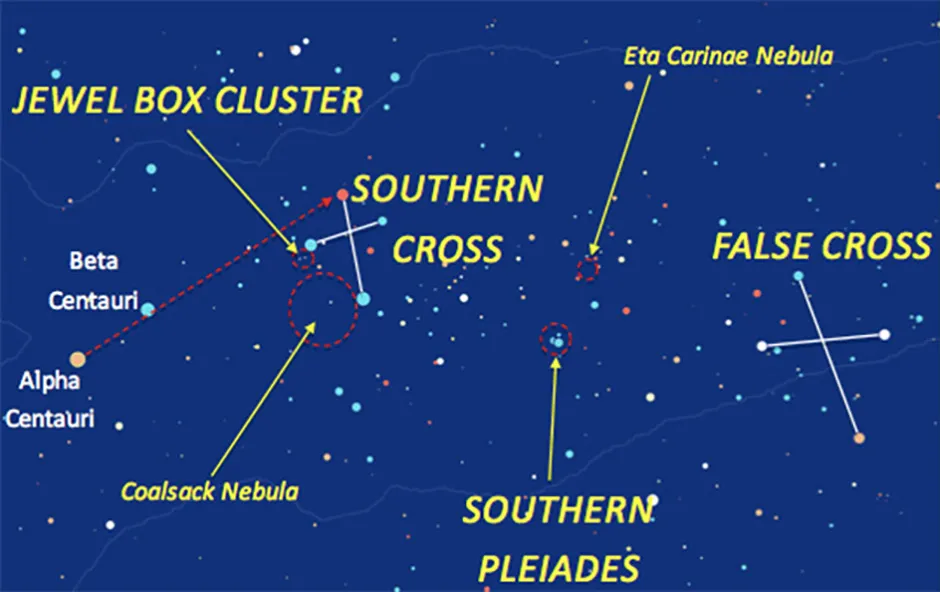
Best time to seeMarch-September
Alpha Centauri has a close visual neighbour that's almost as bright, though Beta Centauri is 390 light years distant.It's actually two stars orbiting each other, 10,000 times brighter than our Sun.
Together, Alpha Centauri and Beta Centauri are called the Southern Pointers because they point straight to Crux, also known as the Southern Cross.Once found, they're never forgotten.
4
Crux (Southern Cross)
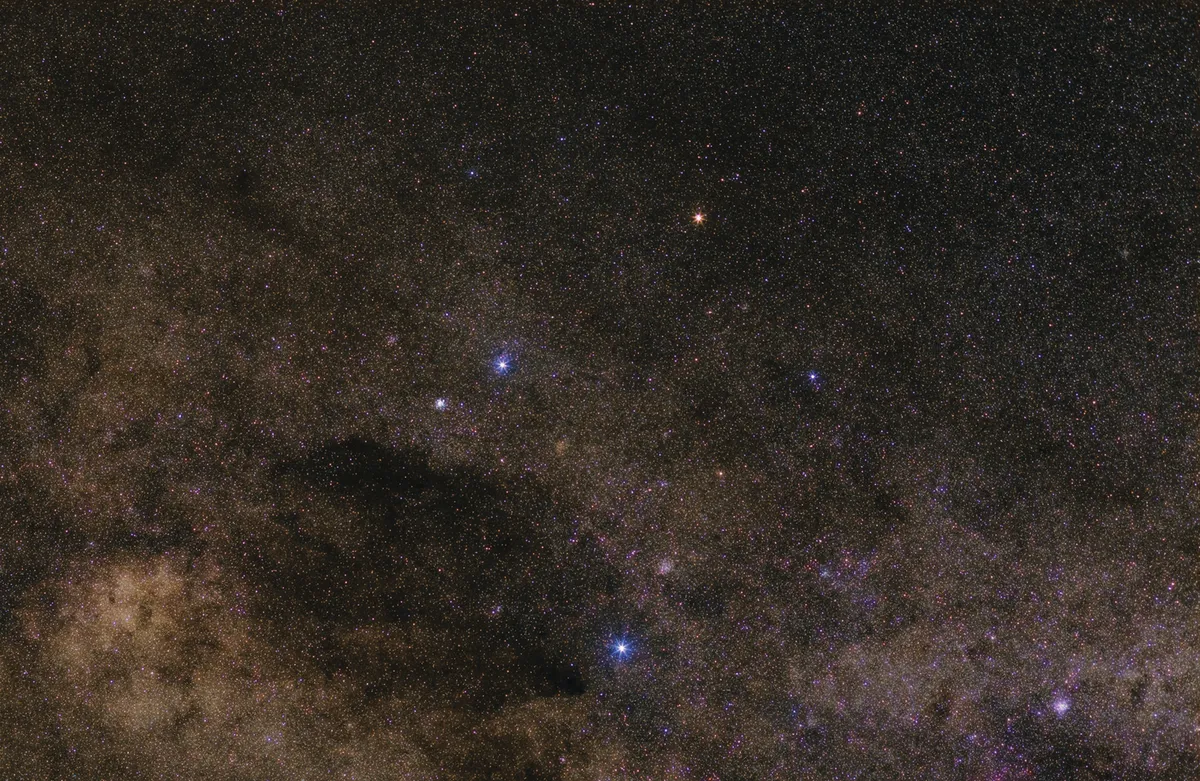
Best time to seeMarch-September
Perhaps the most famous southern sight of all, Crux – the Southern Cross – can appear surprisingly small for first-timers.It's also often missed (there's a much bigger False Cross nearby).
To find it, go from Alpha Centauri to Beta Centauri, then go three times the distance between those two stars and you'll arrive at Gacrux at the top of the cross.
Sweep binoculars around here and you'll see numerous stunning star clusters.
5
Jewel Box cluster

Best time to see March-September
The Jewel Box cluster is best observed through binoculars or, better still, a small telescope. If you love the Perseus Double Cluster in the north, you'll instantly love the Jewel Box – NGC 4755 – a bright open cluster found close to Gacrux and Becrux in the Southern Cross.
Four stars in binoculars, it's revealed as 100 sparkling red and blue stars in a telescope.
6
Coalsack Nebula
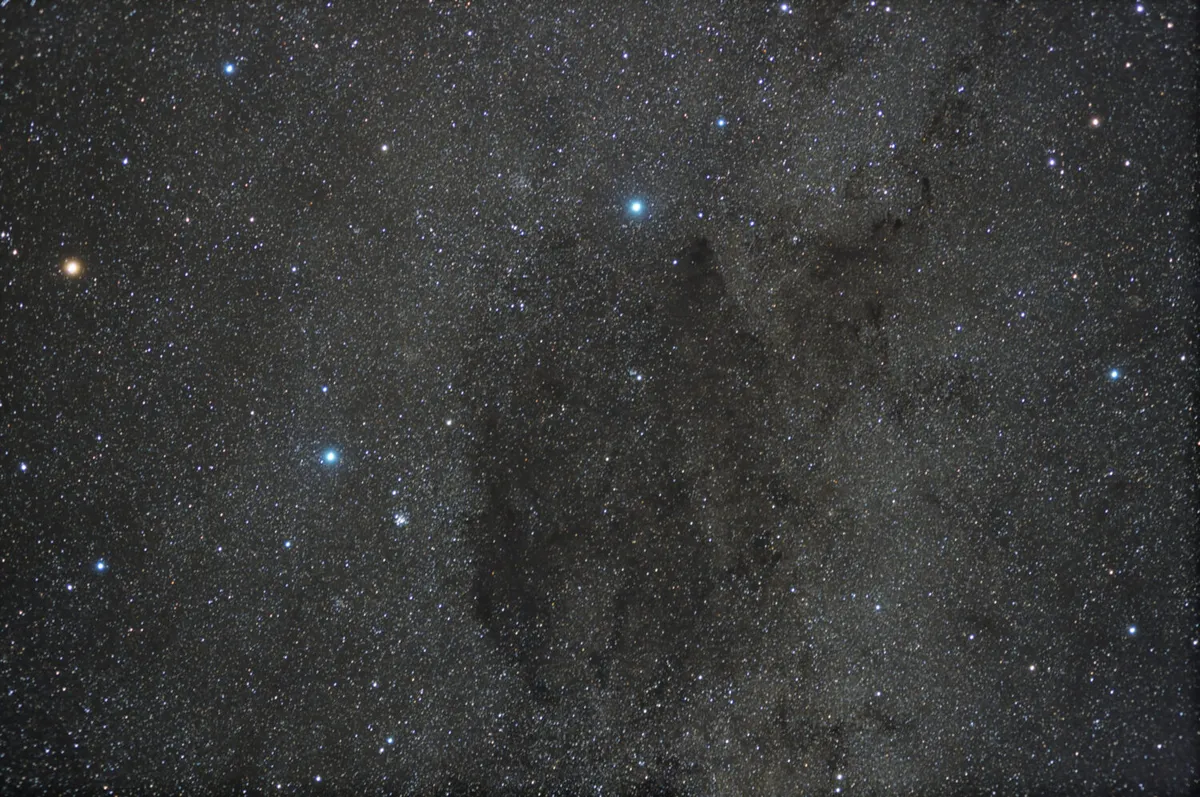
Best time to see March-September
There's nothing to see here, but that's the point.Look just below the Jewel Box Cluster for a dark band across the Milky Way, which will be very obvious if you're under a dark sky.
The Coalsack is an interstellar dust cloud about 600 light years distant that blocks the light of stars behind it from reaching us. It's a type of object known as a dark nebula. The stars you can see 'within' it – visible with binoculars – are in fact closer to us than the Coalsack itself.
7
Canopus
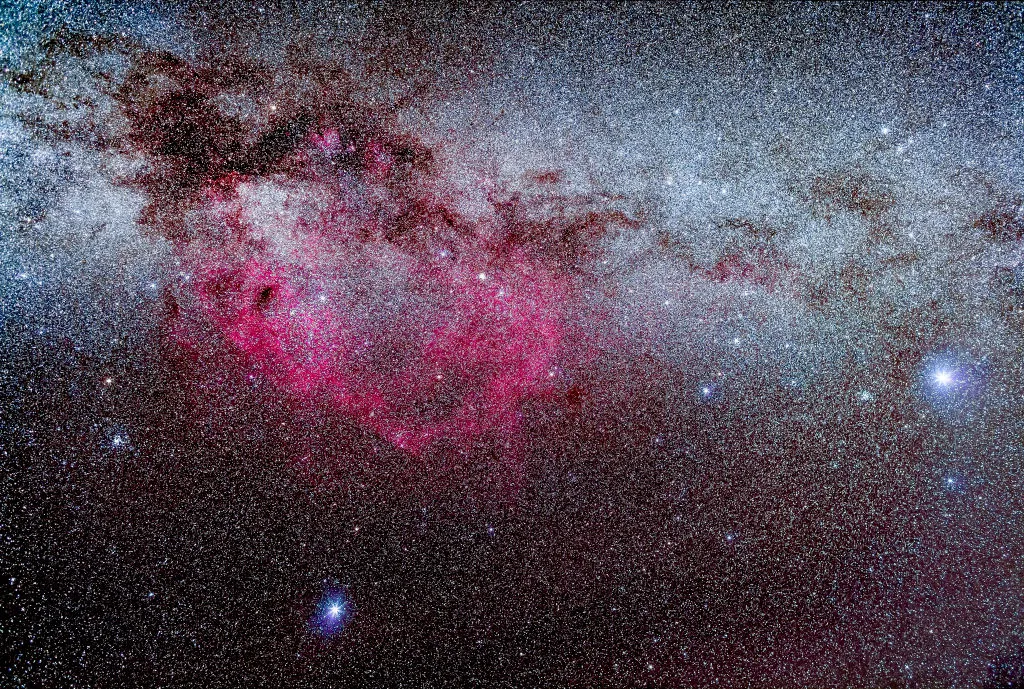
Best time to see October-May
Also known as the Great Star of the South, Canopus is a visual big brother to Sirius.
The second brightest star in the sky after Sirius is 40 degrees below its brighter companion, so while rarely visible to stargazers in the northern hemisphere (it can be glimpsed from equatorial latitudes), both stars are often seen together in the southern night sky.
However, these brothers aren't close; Sirius is 8.7 lightyears from us, while Canopus is 313 lightyears distant, and a whopping 65 times larger than the Sun.
8
Small & Large Magellanic Clouds
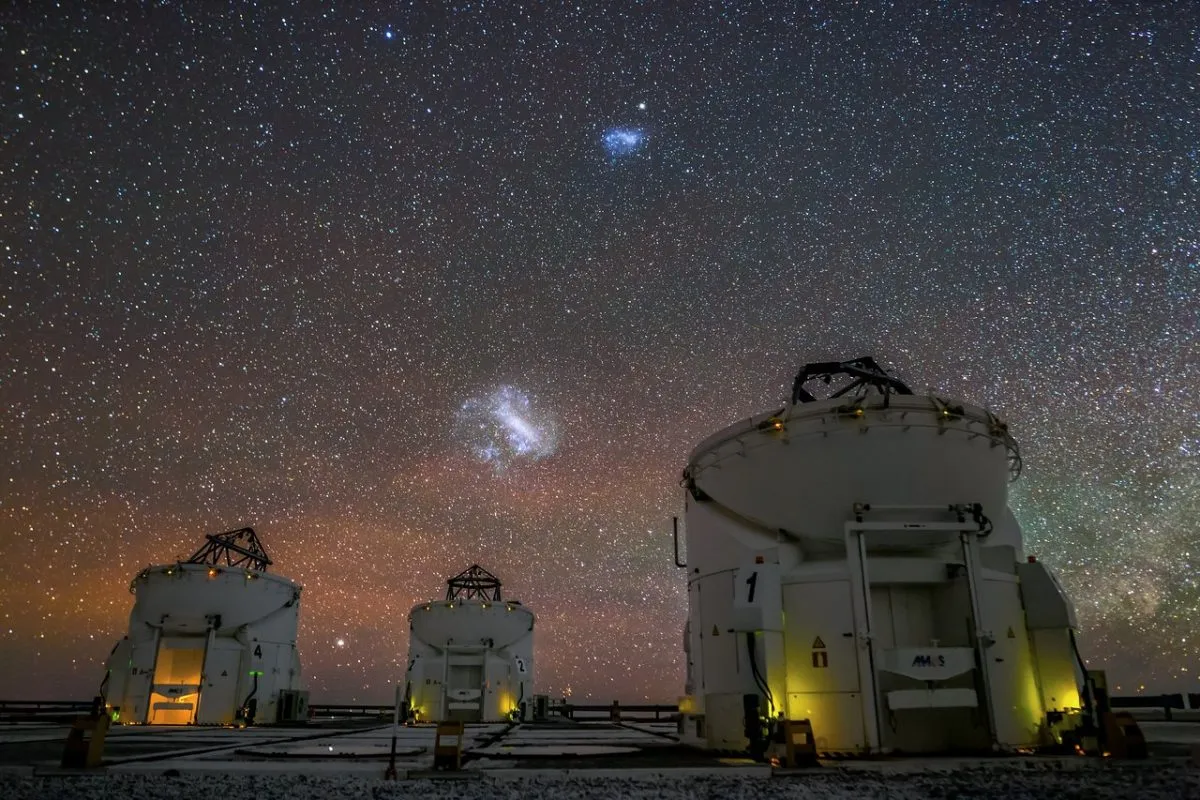
Best time to see October-February
Northern newcomers have been heard to utter that the southern hemisphere is too cloudy, until being told that those hazy patches are actually close-by galaxies.
The SMC and the LMC, dwarf galaxies that orbit the Milky Way, are filled with dense star fields and a major reason why the world's biggest telescopes are situated south of the equator.
The LMC contains the Tarantula Nebula, a supermassive version of the Orion Nebula.
9
Eta Carinae & the Southern Pleiades
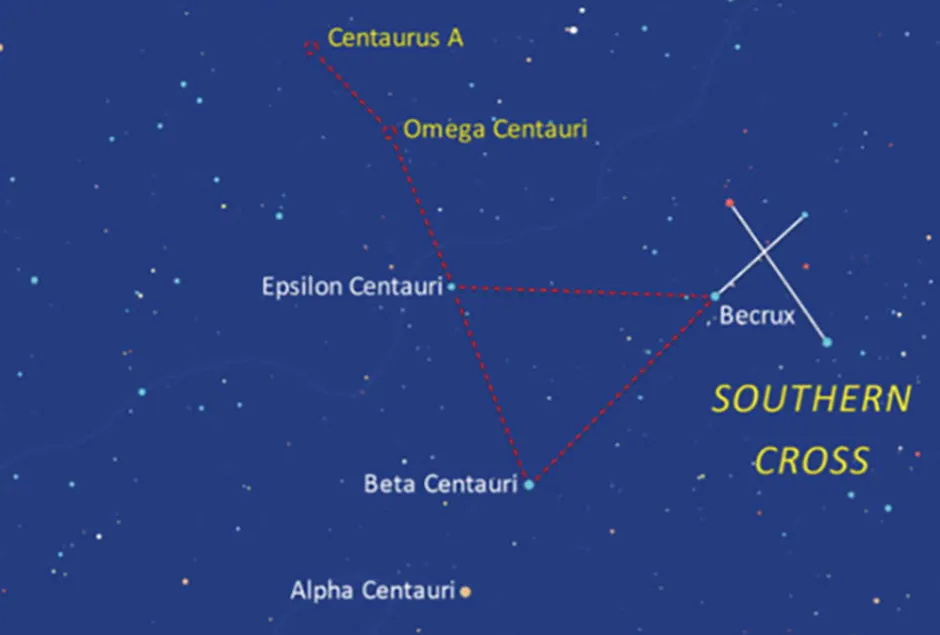
Best time to see February-July
Forget Betelgeuse; it's Eta Carinae that is more likely to go supernova.This, the most massive star of all, is 9,000 light years away and 100 times bigger than the Sun, but an unfathomable five million times more luminous.
It's at the centre of the Great Nebula in Carina, NGC 3372. Below it, on the opposite side of the plane of the Milky Way, is an open cluster called the Southern Pleiades - as opposed to our own Pleiades in the northern hemisphere - which looks spectacular through binoculars.
10
Omega Centauri
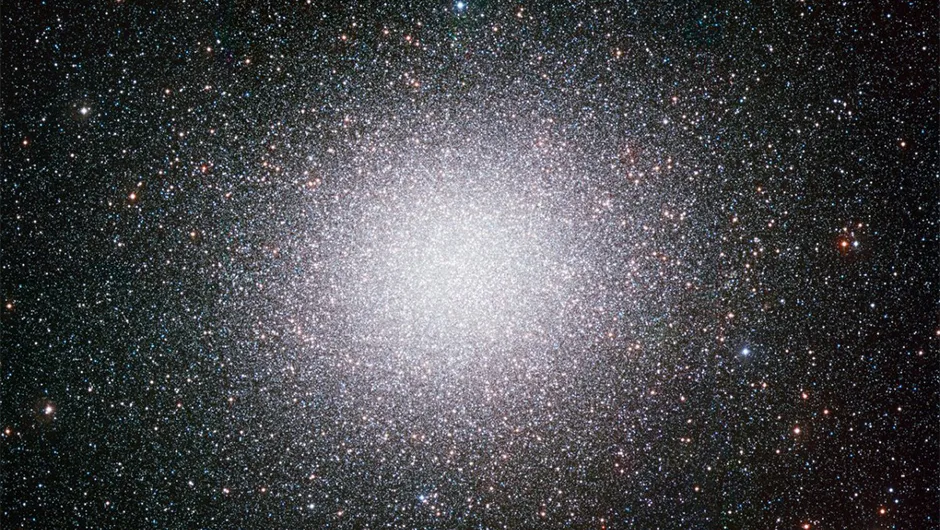
Best time to see March–September
A naked eye globular cluster? The very finest of all globular clusters – and visible from southerly latitudes above the equator – the startlingly bright Omega Centauri globular cluster (NGC 5139) is a bright fuzzy blob even without binoculars.
This 13 billion year old, one million star-strong globular, thought to be the nucleus of a dwarf galaxy that collided with the Milky Way, can be found by making an equilateral triangle using The Pointers and the Southern Cross and Epsilon Centauri, but it's so bright it's hard to miss in clear skies.
11
Zeta Reticuli
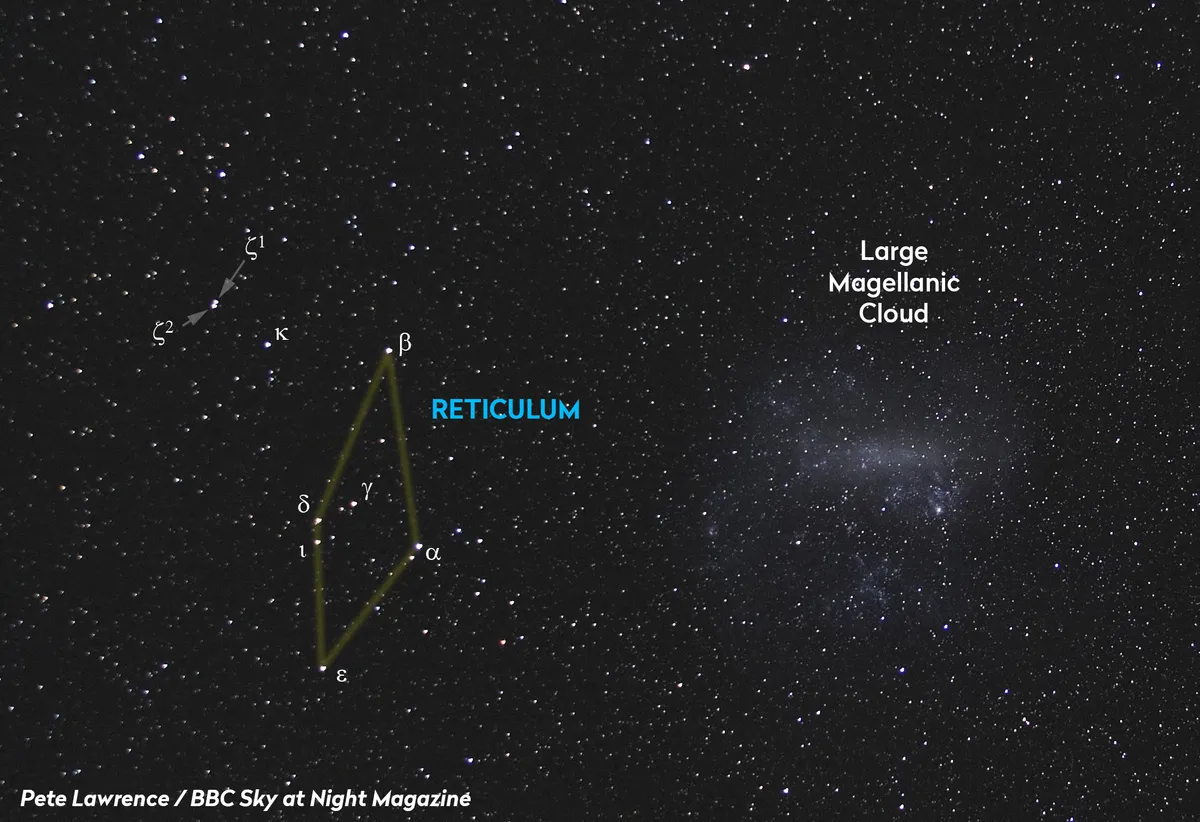
Best time to see: January
The double star Zeta Reticuli can be separated with the naked eye when viewing under good conditions, and looks even better with binoculars or a telescope.
The two stars are similar to our Sun and have become quite famous for two reasons: firstly, due to research into whether or not an exoplanet is in orbit around Zeta 2, and secondly, due to their mention in the famous UFO abduction story of Betty and Barney Hill that made headlines in the 1960s.
Best places to stargaze in the southern hemisphere
Mashatu, Botswana
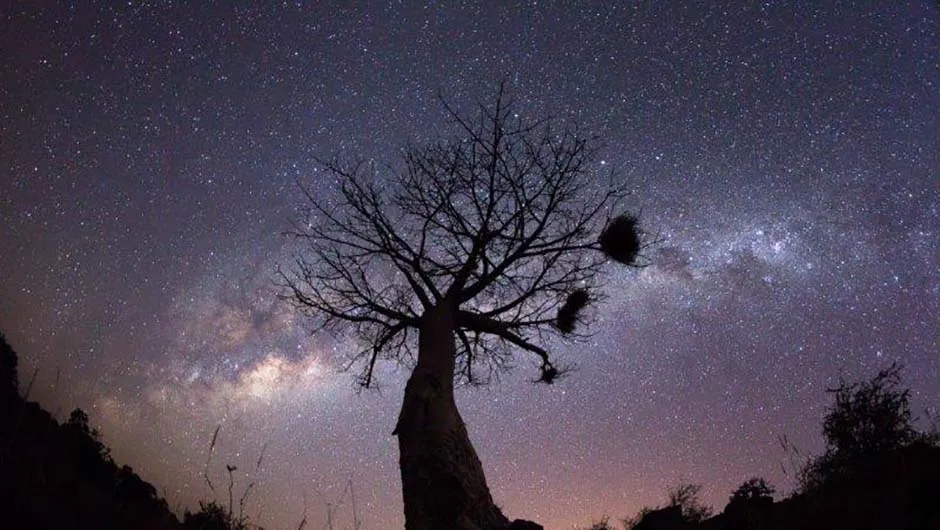
Africa often gets overlooked by stargazers, but its skies are among the world's darkest.Mashatu in the eastern Kalahari Desert is rain-free 92% of the year and has zero light pollution. Aardvark Safaris can organise seven nights at Mashatu Tent Camp.
Just be careful where you walk if you see a shooting star; locals spit on the floor if they see one to guard against misfortune.
Atacama Desert, Chile
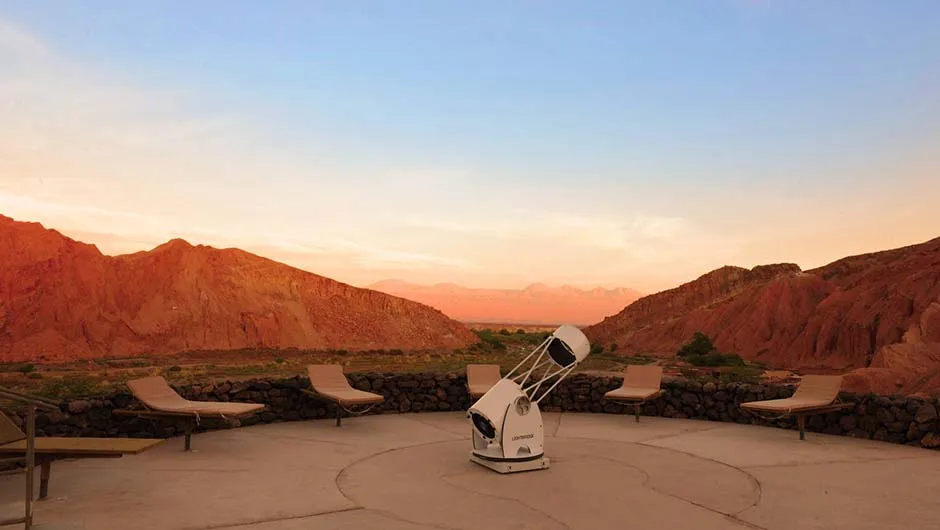
Up on a plateau as high as a breathtaking 16,400ft/5,000m, the stars don't twinkle, they glow.RealWorld's 12-day Vines & Volcanoes trip (£2,295 per person) includes visits to the Very Large Telescope, HARPS and ALMA.
It's also possible to visit Elqui Domos, an observatory with two Schmidt-Cassegrain telescopes, while Rainbow Tours’ Ultimate Stargazing Adventure includes three nights at Alto Atacama, which has its own observatory and stargazing programme.
NamibRand Nature Reserve, Namibia
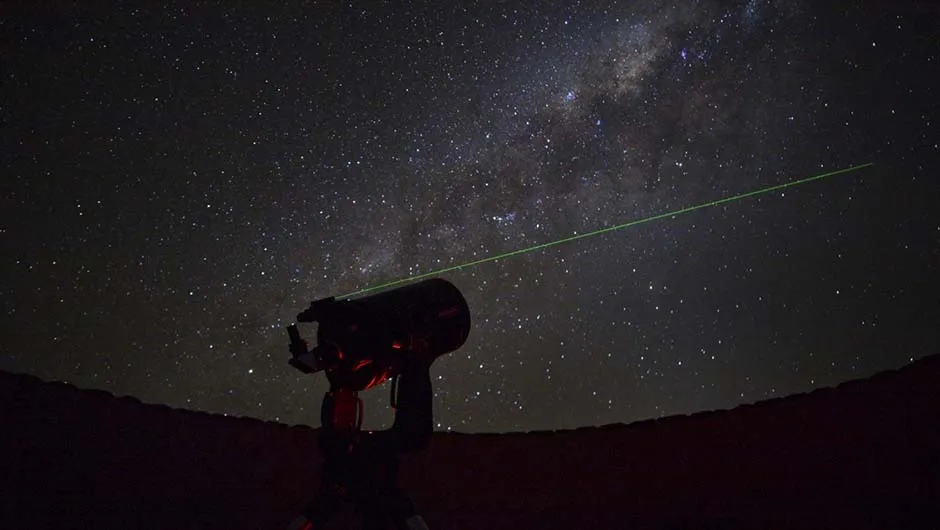
In one of only three gold-rated International Dark Sky Parks in the world, NamibRand's clear, unpolluted skies are legendary among stargazers and astro-photographers.If you're happy to rough it, Gane and Marshallrun a guided desert hike to sleep under the stars.Meanwhile,andBeyond Sossusvlei Desert Lodgeoffers stargazing at an observatory, complete with resident astronomer.
New Zealand
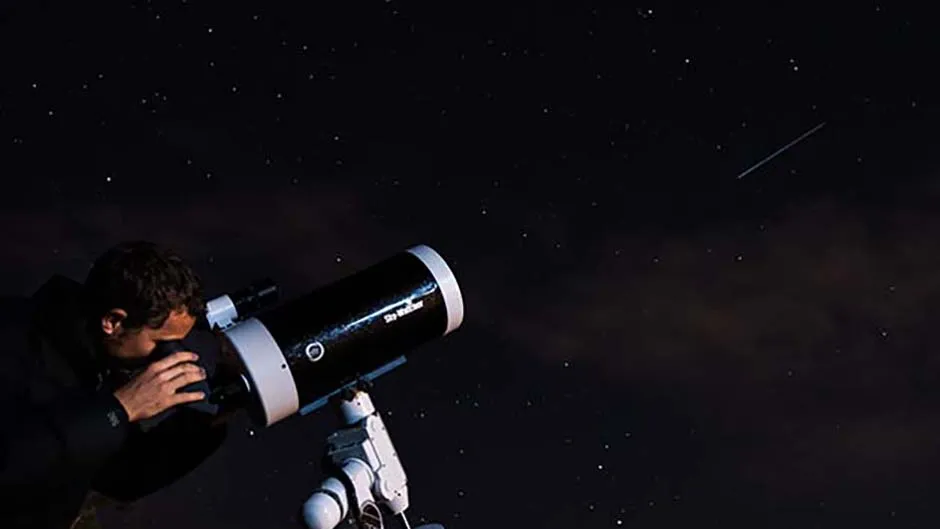
Near the geothermal wonder that is Rotorua in the North Island, the Skyline Rotorua Stargazing is a trip up Mount Ngongotaha by gondola to a dedicated observing platform.Complete with guide and telescope time, the tour lasts 75 minutes.
Meanwhile, 360-degree glass Pure Pods in River, Canterbury and Kaikoura – both in the South Island – promise stargazing from your bed (from £210 per night).
